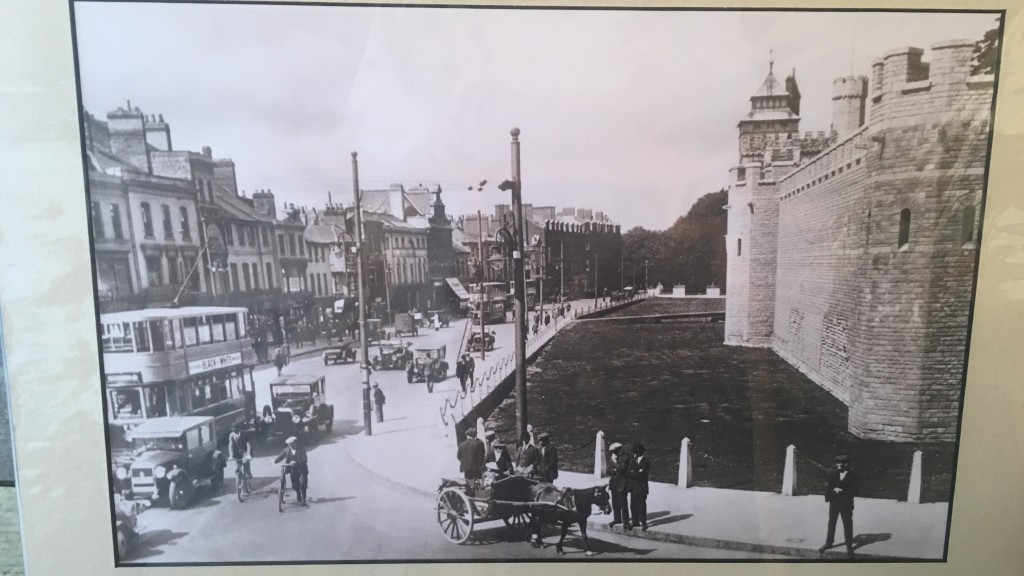Phil described his interest in collecting old photos of Wales as an accident. He said: “It is just something I fell into, it wasn’t something I thought about, and it was just an accident, but a very good accident.”
Phil Baker, who has been collecting old photos of Wales over twenty years, now he has over 4,000 images and productions, viewing 520 plus Welsh towns and villages in his collection. “I have always been interested in these materials, and I have a degree in history, I’ve always loves history.” His passion for history made him love old pictures, now his selling these pictures on his website, Reflective Images, and at the Cardiff Christmas market this winter.
 [part of Phil’s collections at Cardiff Christmas Market]
[part of Phil’s collections at Cardiff Christmas Market]
The picture materials he collected are dated between early 1890 up to early 1920’s. Those photos documented this period of great social and economic change of Welsh rural and urban life, including street scenes, schools, churches, railways, collieries, dockyards etc. “The photos are very difficult to date. When we take a modern digital photograph, the date was on the magnet, with these materials there was no date on them.” Most of these photos were taken by independent photographers who worked in their own community producing photographs, but they didn’t put their names or dates on these pictures. “They didn’t do it, because obviously, I don’t think they believe in a hundred years’ time we still would be interested in their work, so there is no real reason for them to put a date on it.”
part of the local history
On his website, Phil wrote that the original material they uses, may contain spelling mistakes and wrong street names, and then they leave them exactly as they find them. Because they are all part of the history, all part of the original.
 [a picture of Dowlais workers early 1900’s]
[a picture of Dowlais workers early 1900’s]
“It is about marrying one picture with that customer”
Most of his customers are originally from Wales or are now live in Wales, people don’t come in his shop and buy a random pictures, and it has to be something special for them. “Because obviously everybody could look at one picture and see something different in there for them. So everybody, whatever generations, will look at a street scene, but because of the age differences, they will see something different, that means something for them. So you look at a particular building which will be a house over the century, maybe a dozen of different shops. So everybody will look at that building and say they remembered what shop was there when they were growing up. So everybody will look at the pictures and see something different in them.”
“It is about marrying one picture with that customer.” For Phil, every picture is particular, they all mean something to somebody, it makes him feel lucky, because these pictures are all not hard to get. Some of the photos he collected were sent to him by dealers, but most of them came from customers who brought materials from their own productions.
“They just turn up,” he said. The most interesting part of his collection is to see the reaction of the public. “When they look at these photos, they will tell you the story, that’s what you pick up on the other day. It will mean something to them. When somebody come in and buy something, it has a reaction to them, that’s good.”

 [Duke Street in Cardiff]
[Duke Street in Cardiff]